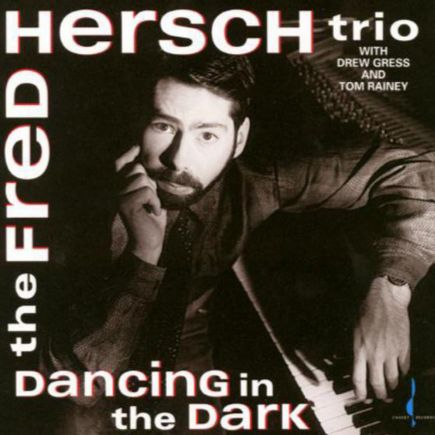Out of Nowhere: l’irruption mélodique d’un standard durable
Composée par Johnny Green avec des paroles d’Edward Heyman, Out of Nowhere est publiée en 1931 par Famous Music et popularisée par Bing Crosby, dont l’interprétation marque son premier numéro un en solo. Dès sa sortie, la chanson séduit par son raffinement harmonique et devient rapidement un terrain d’exploration privilégié pour les musiciens de jazz.
Dans un contexte où les arrangements swing cherchent à renouveler les formes, la progression d’accords de Out of Nowhere se distingue par son originalité: des modulations inattendues, une tension expressive, et un enchaînement fluide qui ouvre la voie à l’improvisation. Cette architecture harmonique influencera plusieurs générations de compositeurs, inspirant des pièces comme Casbah de Tadd Dameron, Nostalgia de Fats Navarro, Sans Souci de Gigi Gryce ou encore 317 East 32nd Street de Lennie Tristano.
Si les versions instrumentales ont contribué à sa renommée, les paroles d’Edward Heyman ajoutent une touche poétique au morceau. Elles évoquent une rencontre amoureuse survenant de façon inattendue, bouleversant le cours des choses avec la magie de l’imprévu — un thème récurrent dans la tradition populaire américaine.
Fred Hersch, la profondeur poétique
Parmi les moments les plus marquants de l’album Dancing in the Dark, enregistré les 3 et 4 décembre 1992, figure l’interprétation de Out of Nowhere. Cette mélodie, devenue au fil des décennies un terrain d’improvisation privilégié, trouve sous les doigts de Fred Hersch, entouré de Drew Gress à la basse et de Tom Rainey à la batterie, une nouvelle dimension, nourrie d’introspection et d’élégance.
L’approche de Hersch se distingue par une grande clarté harmonique: les accords se déploient avec fluidité, ouvrant des espaces où la mélodie peut respirer. Dès l’exposition du thème, son toucher met en avant une délicatesse presque vocale, donnant à chaque note un poids expressif. L’improvisation se construit ensuite dans un équilibre qui reflète l’influence à la fois méditative de Bill Evans et la liberté anguleuse de Thelonious Monk, sans jamais tomber dans la simple imitation.
Le rôle de Drew Gress s’avère essentiel: ses lignes de basse, souples et inventives, ne se limitent pas à un soutien rythmique mais deviennent un véritable contrepoint, dialoguant constamment avec le piano. Tom Rainey, de son côté, privilégie une batterie coloriste et aérée, qui enveloppe le discours sans l’alourdir, créant une texture mouvante où chaque détail sonore compte.
Out of Nowhere: la irrupción melódica de un estándar duradero
Compuesta por Johnny Green con letra de Edward Heyman, Out of Nowhere fue publicada en 1931 por Famous Music y popularizada por Bing Crosby, cuya interpretación marcó su primer número uno como solista. Desde su lanzamiento, la canción conquistó por su sofisticación armónica y se convirtió rápidamente en un terreno privilegiado para la exploración jazzística.
En un contexto donde los arreglos del swing buscaban renovar las formas, la progresión de acordes de Out of Nowhere se destacó por su originalidad: modulaciones inesperadas, tensión expresiva y una fluidez estructural que abría amplias posibilidades para la improvisación. Esta arquitectura armónica influiría en generaciones de compositores, inspirando obras como Casbah de Tadd Dameron, Nostalgia de Fats Navarro, Sans Souci de Gigi Gryce y 317 East 32nd Street de Lennie Tristano.
Aunque las versiones instrumentales contribuyeron a su notoriedad, la letra de Edward Heyman aporta una dimensión poética al tema. Narra un encuentro amoroso inesperado que transforma la vida del protagonista con la magia de lo imprevisto, un motivo recurrente en la tradición popular estadounidense.
Fred Hersch, la profundidad poética
Entre los momentos más destacados del álbum Dancing in the Dark, grabado los días 3 y 4 de diciembre de 1992, se encuentra la interpretación de Out of Nowhere. Esta melodía, convertida con el paso de las décadas en un terreno privilegiado para la improvisación, adquiere bajo los dedos de Fred Hersch —acompañado por Drew Gress en el contrabajo y Tom Rainey en la batería— una nueva dimensión, nutrida de introspección y elegancia.
El enfoque de Hersch se distingue por una gran claridad armónica: los acordes fluyen con naturalidad, abriendo espacios donde la melodía puede respirar. Desde la exposición del tema, su toque revela una delicadeza casi vocal, otorgando a cada nota un peso expresivo. La improvisación se construye luego en un equilibrio que refleja tanto la influencia meditativa de Bill Evans como la libertad angulosa de Thelonious Monk, sin caer nunca en la mera imitación.
El papel de Drew Gress resulta esencial: sus líneas de contrabajo, flexibles e inventivas, trascienden el simple apoyo rítmico para convertirse en un verdadero contrapunto, en constante diálogo con el piano. Tom Rainey, por su parte, opta por una batería colorista y aireada, que envuelve el discurso sin sobrecargarlo, creando una textura cambiante en la que cada detalle sonoro cobra importancia.
Out of Nowhere: l’irruzione melodica di uno standard duraturo
Composta da Johnny Green con testo di Edward Heyman, Out of Nowhere fu pubblicata nel 1931 da Famous Music e resa celebre da Bing Crosby, la cui interpretazione segnò il suo primo numero uno da solista. Fin da subito, il brano colpì per la raffinatezza armonica e divenne un campo di esplorazione privilegiato per i musicisti jazz.
In un periodo in cui gli arrangiamenti swing cercavano nuove vie espressive, la progressione armonica di Out of Nowhere si distinse per la sua originalità: modulazioni inaspettate, tensione espressiva e una fluidità strutturale che apriva ampi spazi all’improvvisazione. Questa struttura influenzò diverse generazioni di compositori, ispirando brani come Casbah di Tadd Dameron, Nostalgia di Fats Navarro, Sans Souci di Gigi Gryce e 317 East 32nd Street di Lennie Tristano.
Se le versioni strumentali hanno consolidato la fama del brano, il testo di Edward Heyman aggiunge una dimensione poetica alla composizione. Racconta un incontro amoroso inatteso che stravolge la vita del protagonista con la magia dell’imprevisto, tema ricorrente nella canzone americana.
Fred Hersch, la profondità poetica
Tra i momenti più significativi dell’album Dancing in the Dark, registrato il 3 e 4 dicembre 1992, spicca l’interpretazione di Out of Nowhere. Questa melodia, divenuta nel corso dei decenni un terreno privilegiato per l’improvvisazione, trova sotto le dita di Fred Hersch —affiancato da Drew Gress al contrabbasso e Tom Rainey alla batteria— una nuova dimensione, nutrita di introspezione ed eleganza.
L’approccio di Hersch si distingue per una grande chiarezza armonica: gli accordi scorrono con fluidità, aprendo spazi in cui la melodia può respirare. Fin dall’esposizione del tema, il suo tocco mette in risalto una delicatezza quasi vocale, conferendo a ogni nota un peso espressivo. L’improvvisazione si sviluppa poi in un equilibrio che riflette tanto l’influenza meditativa di Bill Evans quanto la libertà angolosa di Thelonious Monk, senza mai cadere nella semplice imitazione.
Il ruolo di Drew Gress si rivela essenziale: le sue linee di contrabbasso, flessibili e inventive, vanno oltre il mero sostegno ritmico per trasformarsi in un autentico contrappunto, in dialogo costante con il pianoforte. Tom Rainey, dal canto suo, privilegia una batteria colorista e ariosa, che avvolge il discorso senza appesantirlo, creando una trama mutevole in cui ogni dettaglio sonoro assume rilievo.
Out of Nowhere: the melodic spark of a lasting standard
Composed by Johnny Green with lyrics by Edward Heyman, Out of Nowhere was published in 1931 by Famous Music and popularized by Bing Crosby, whose recording became his first solo number-one hit. From its debut, the song stood out for its harmonic sophistication and quickly became a favorite among jazz musicians for its improvisational potential.
At a time when swing arrangements were exploring new directions, Out of Nowhere distinguished itself through its innovative chord progression: unexpected modulations, expressive tension, and a flowing structure that encouraged creative exploration. Its harmonic design would go on to influence several generations of composers, inspiring pieces such as Tadd Dameron’s Casbah, Fats Navarro’s Nostalgia, Gigi Gryce’s Sans Souci, and Lennie Tristano’s 317 East 32nd Street.
While instrumental versions played a major role in its rise, Edward Heyman’s lyrics add a poetic touch. They tell of a love that appears suddenly and transforms everything with the magic of the unexpected—a recurring theme in American popular song.
Fred Hersch, the poetic depth
Among the most remarkable moments of the album Dancing in the Dark, recorded on December 3 and 4, 1992, is the interpretation of Out of Nowhere. This melody, which over the decades has become a favored ground for improvisation, takes on a new dimension in the hands of Fred Hersch —joined by Drew Gress on bass and Tom Rainey on drums— enriched with introspection and elegance.
Hersch’s approach stands out for its harmonic clarity: the chords unfold with fluidity, opening spaces where the melody can breathe. From the very statement of the theme, his touch reveals an almost vocal delicacy, giving each note expressive weight. The improvisation then develops in a balance that reflects both the meditative influence of Bill Evans and the angular freedom of Thelonious Monk, without ever lapsing into mere imitation.
The role of Drew Gress proves essential: his bass lines, flexible and inventive, go beyond rhythmic support to become a true counterpoint, in constant dialogue with the piano. Tom Rainey, for his part, favors a colorful and airy drumming that envelops the discourse without weighing it down, creating a shifting texture in which every sonic detail matters.


